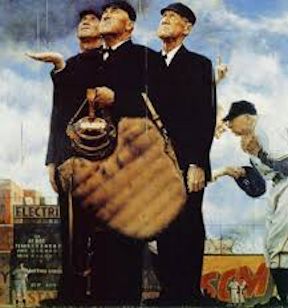 The Pitcher
The Pitcher
Of the triad at the core of baseball (batting, fielding, and pitching), pitching is far and away the most complex. This is true not just for players and coaches, but for umpires as well. There are a lot of rules governing pitchers and pitching, and many of them are nuanced.
Aspects of umpiring like working the plate, calling balls and strikes, and particularly seeing and calling balks, take time and experience. Even a seemingly silly question like "When is a pitcher not a pitcher?" is actually an important and meaningful question.
In fact, umpiring pitchers and pitching is so broad a topic that we cover it over five articles. The present article, The Pitcher, is first in the series. The remaining four are:
What is a pitcher?
That sounds like a stupid question, but it's not. To get at the answer, let's start with the rule book: Definitions (pitcher): "… the fielder designated to deliver the pitch to the batter."
Simple enough. But there's more to it. The player designated in the lineup "to deliver the pitch to the batter" is only a pitcher (technically) when he is in contact with the pitching plate. When that player is not in contact with the pitching plate (the "rubber"), the player is no longer (technically) a pitcher, but rather just a defensive fielder.
So to recap, the pitcher is the player designated on the lineup to deliver the pitch; but then we learn that he's only really a pitcher when in contact with the pitching rubber, and that at all other times on defense, he's simply another fielder. What gives?
What gives is that there are several pitching rules and prohibitions that apply to the pitcher when (and only when) he is in contact with the rubber. When he is not in contact with the rubber, he's simply a defensive fielder and those pitching rules no longer apply. For example, while not engaged (that is, while he's a fielder), the player can fake a throw to any base. When engaged to the rubber, however (when he's a pitcher), faking a throw to a base is almost always a balk.
The matter of what a pitcher can and cannot do depends on two things. First, as we've said, it matters whether the "pitcher" is a pitcher or a fielder – that is, whether he is in contact with the rubber or not. Second, the pitching rules vary depending on whether the pitcher is in the windup position or the set position. And finally, which rules apply depend also on the point in the pitching sequence the pitcher has reached.
We go into detail on the pitching positions, the pitching regulations with respect to the pitching positions, and then about balks and illegal pitches in the two companion articles, The Pitching Positions and Balks & Illegal Pitches.

